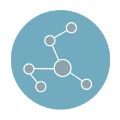About me
I recently completed my Ph.D. in Bioengineering in Herbert Sauro's lab at the University of Washington where I developed software to readily construct graphs and recurrent neural network models of neural dynamics collected with calcium imaging data. I applied these packages to data collected from the dentate gyrus and the basolateral amygdala in live and behaving mice, in order to study functional connectivity changes in the anxiety circuitry.
I am seeking opportunities to work on neuromodulation or brain-computer interfaces for improving human health, especially to apply adaptive, closed-loop control to improving treatment-resistant mood and anxiety disorders.
A Whole Human
-
Research
I study neural dynamics using graph theory and machine learning, investigating the anxiety circuitry in collaboration with skilled experimentalists.
-
Software development
As a computational researcher, I develop Python packages to assist neurobiologists in analyzing their data. I aim to make reproducible and reuseable models.
-
Racing and Outdoor Pursuits
I am a marathoner and am running my first IronMan soon! I love to boulder and rock climb, backpack, hike, summit mountains, snowboard, and explore the world.
-
Music and Art
I also enjoy painting portraits, writing poetry and songs, singing, and playing my guitar.
Research Projects






